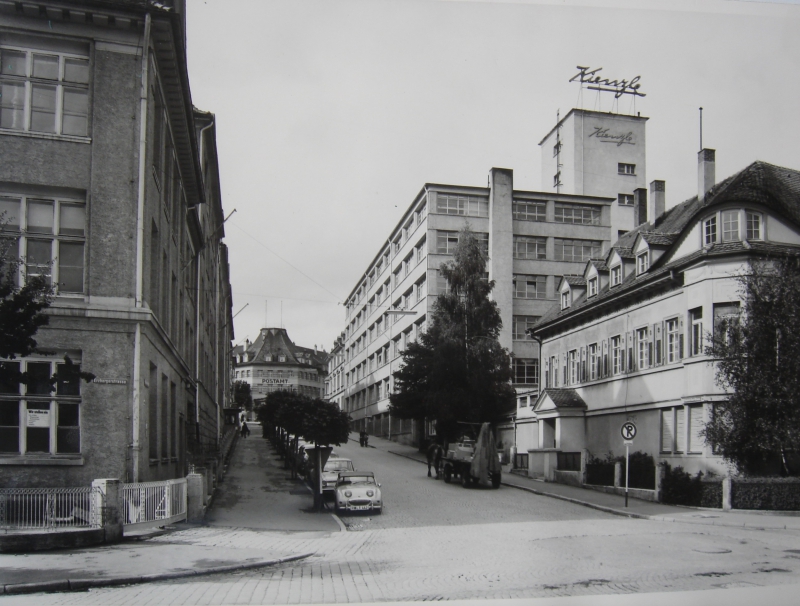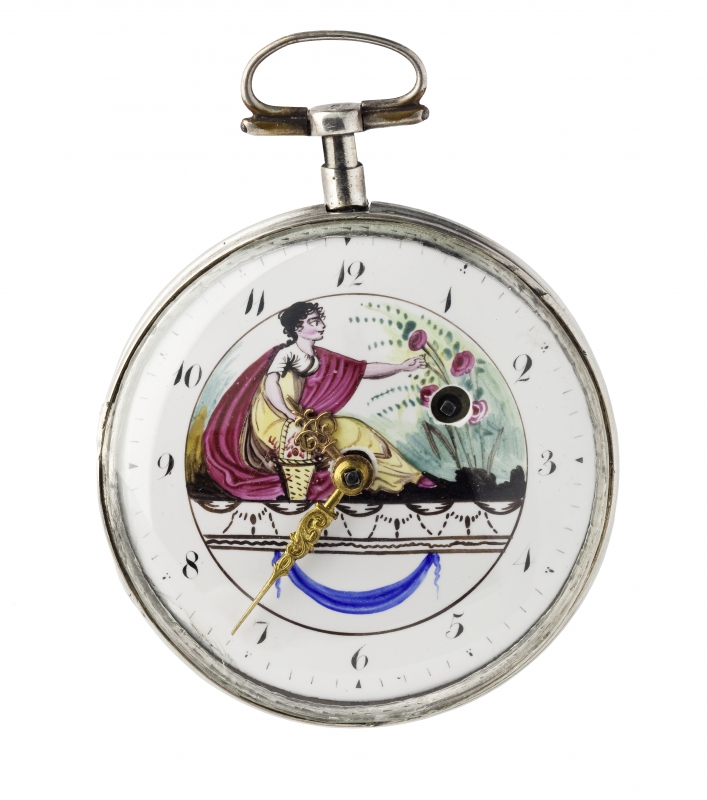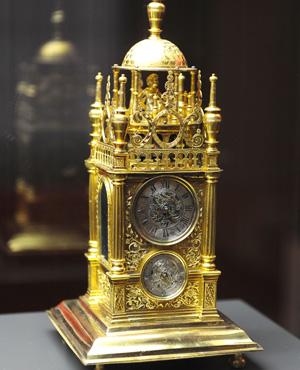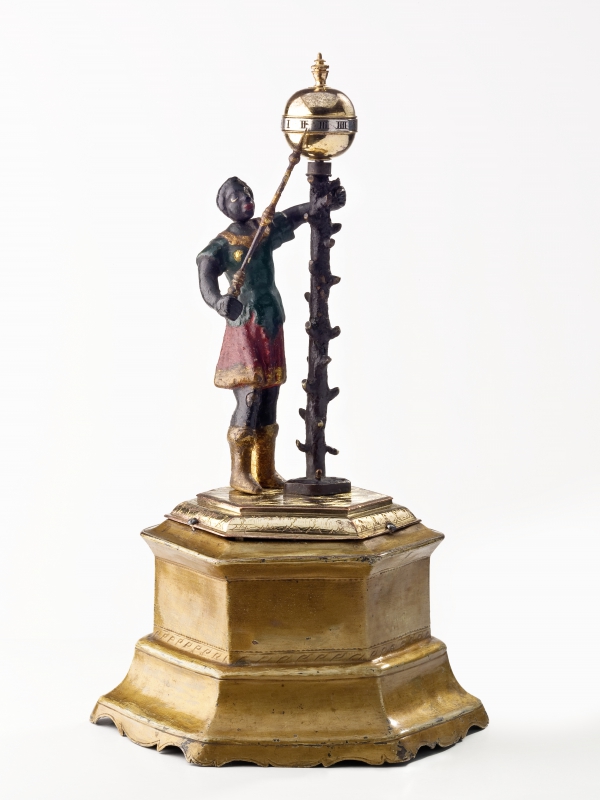The Contract
The auction object (the "Object") is auctioned by Ineichen Zürich AG, Zurich ("Ineichen"), in the name and for the account of the Consignor / Seller (the "Seller"). The lot will be knocked down to the highest bidder (the "Buyer") after three calls and will result in the conclusion of a purchase contract between the Seller and the Buyer. The bid is considered winning only when knocked down with the hammer by Auctioneer and confirmed via e-mail or phone-call by Us. The Buyer expressly acknowledges that, irrespective of the specific circumstances, Ineichen always acts as the direct representative of the Seller, so that the contract of sale is exclusively between the Buyer and the Seller. With each oral or written bid submitted, the auction participant acknowledges these auction conditions.
Buyer's Liabilities
Each buyer is personally liable for the bids made by him orally or in writing as well as from a knockdown awarded to him and a purchase contract with the seller resulting therefrom. Ineichen may require persons bidding as a proxy in the name of another person or as an organ of a legal entity to furnish proof of their power of representation. A person acting as a proxy is jointly and severally liable with the person represented, without limitation, for the fulfilment of all obligations in this connection. A bid submitted at the auction is considered a binding offer until it is outbid or rejected by Ineichen. Ineichen may demand from a bidder unknown to it that he legitimises and identifies himself.
Buyer's Premium
As of May 2022, we officially cancel the buyer’s premium. The buyer’s obligation is limited to the hammer price and VAT payment only.
VAT
The applicable Swiss Value Added Tax shall be paid by the buyer on the net hammer price (as a price of the product purchased in Switzerland). Buyers who present an export declaration duly stamped by the Swiss customs authorities will be refunded the value added tax levied on the net additional price if the value added tax exceeds the amount of CHF 30. For goods shipped outside of Switzerland, Swiss VAT can be excluded from initial invoice by request of a buyer. If the product is shipped outside of Switzerland, both service and product considered to be exported, hence VAT is excluded for the hammerprice. In such case the buyer is liable to pay all the duties (e.g.: import tax and VAT) according to the importing state laws. The request for VAT exclusion should be submitted to info@ineichen.com
Payment
Payment of the net hammer price and value added tax shall be made at the auction or no later than 5 days after the date of the auction execution in cash or by any other method of payment accepted by Ineichen. In case of late payments an interest on arrears of 10% p.a. will be charged on the net hammer price. The delivery of the object takes place in principle after full payment by the buyer. Ineichen has a right of retention and a lien on the object for all its claims against the buyer. It is authorised to realise the object in accordance with the provisions of the SchKG or to sell it by private contract; Art. 41 SchKG is not applicable.
If payment is not made on time, the buyer will be given a 5-day grace period by means of a reminder. If this period also remains unused, the purchase is considered as cancelled by the buyer (Read “Purchase Cancellation” section of these Auction Conditions). Ineichen may adhere to the fulfilment of the purchase contract on behalf of the seller. The assertion of compensation for the delay and further damages is explicitly reserved. Alternatively, after expiry of the period of grace, Ineichen may declare withdrawal from the purchase contract in the name of the seller and, after prior consultation with the seller, connect the objects bought by the buyer to a subsequent auction without limitation or sell them by private treaty. In these cases, the buyer has to pay 10% of the net hammer price for Ineichen's expenses.
Payment Methods
At our Boutique: Cash* (CHF, EUR, USD) or credit card payments**, except Postcard
*All cash payments in EUR, USD and CHF are charged a fee of 0,75% by the bank.
Bank Wire Transfer: CHF, EUR, USD Account
Cryptocurrencies: Please contact us at info@ineichen.com for more details or a cryptocurrency invoice
Online credit cards payment: Visa or Mastercard**
We accept online credit card payments with Visa or Mastercard. To receive the link for online payment, please contact us info@ineichen.com.
**A fee of 3% will be charged:
- When paying online with Visa or Mastercard credit cards
- When paying with American Express card at the boutique.
Wire Payments
When you make an international wire transfer (SWIFT) you can choose who pays the transfer charges.
We require all international transfers to us to be made with the OUR* instruction.
*The OUR instruction means you pay all transfer charges. We receive the exact invoiced amount
Reserve price
Reserve price is the minimum price for which an item will sell. If the reserve price is not met, the item will not be sold.
In order to protect the bidder experience, Ineichen doesn’t reveal reserve prices on the website, however in the item description Ineichen specifies if an item has a reserve or not.
As soon as the auction closes, each item will gain one of the following statuses: “Reserve not met”, “Passed”, or “Hammer” (the latter status indicates that the lot has been sold).
Maximum Bid
Please note: If your max bid is one increment higher than your current bid, the max bid becomes a winning bid.
Can I cancel my bid?
Bids cannot be cancelled or changed once placed. We recommend that bidders satisfy themselves with the physical condition of the item(s) as shown in photographs, and that these match the Lot descriptions, prior to placing bids.
Allowing bids to be cancelled would undermine the fairness of the process for all participants, so before you bid, be very careful whether you are willing to bid or you have the sufficient funds to purchase the item(s) in case you win the bid.
There is a chance you will be outbid in the course of the auction. However, we cannot guarantee this outcome, and if you do win the lot you will be responsible for paying for it and picking it up.
Purchase Cancellation
In case of purchase cancellation for any reason except for the product condition, as described in the “Product Conditions” section of this Auction Conditions,
the company is authorized to blacklist the client and freely distribute the information amongst other auction houses.
In these cases, the buyer has to pay 10% of the net hammer price for Ineichen's expense.
Seller’s Commission
Ineichen Auctioneers charges a single Seller’s Commission rate for the services we provide. The commission is calculated on each item as a fixed percentage based on the eventual hammer price at auction.
The commission is to be subtracted from the hammer price paid by the buyer. The commission amount is calculated based on the following model:
|
CHF 50 000 > Net Hammer
|
Commission = 20%
|
|
CHF 50 000 =< Net Hammer =< CHF 150 000
|
Commission = 15%
|
|
Net Hammer > CHF 150 000
|
Commission = 10%
|
Auction Execution
State Control
The Stadtammannamt Zürich 1 shall participate in the auction. The organisation, management, calling, knocking down, recording, collection of the proceeds (hammer price), surrender of the objects and settlement with the consignors are the responsibility of Ineichen, subject to the decision of disputes. Neither the mayor, his representatives, the city nor the canton of Zurich shall be liable for their actions.
All legal relations between Ineichen, the seller and the buyer shall be governed by substantive Swiss law, excluding conflict of law provisions. Place of performance and exclusive place of jurisdiction is Zurich.
Product Conditions
Ineichen reserves the right to combine or separate individual lots in the auction catalogue, to offer them out of sequence or not to put them up for auction. Bids, calls and knockdowns below any limits are permitted.
The objects will be auctioned in the condition they are in at the moment of the knockdown. Every interested party shall have the opportunity to inform himself personally about the condition of the object at the exhibition preceding the auction or by requesting additional information from Ineichen Auctioneers. The description of the object in the auction catalogue has only the character of an expression of opinion and does not constitute a warranty of qualities. Ineichen is not liable for incorrect descriptions or incorrect information regarding origin, date, age, provenance, condition or authenticity, nor for any other open or hidden defects. With the exception of the following provision, any kind of warranty by Ineichen is excluded in its entirety and to the extent permitted by law. The seller's liability towards the buyer is also excluded in its entirety and to the extent permitted by law.
If a buyer provides Ineichen with written proof within 30 days after the auction of an object (knockdown) that the object is a forgery, Ineichen may declare the withdrawal from the purchase contract on behalf of the seller and refund the knockdown price and value added tax, if:
a) the object is returned to Ineichen within 14 days after this notification in the same condition as it was at the time of the knockdown;
b) Ineichen has not yet handed over or transferred the knockdown price to the seller.
Ineichen may require the buyer to obtain expert opinions from two independent experts at his own expense in order to prove the existence of a forgery. Ineichen is in no way bound by such expert opinions and explicitly reserves the right to obtain additional expert opinions at its own expense.
All claims of the buyer against Ineichen and the seller are limited to the reimbursement of the hammer price and value added tax. Further or other claims of the buyer against Ineichen and the seller are excluded in their entirety and to the extent permitted by law.
Ownership Rights Transmission
The benefit and risk of the objects shall pass to the buyer upon acceptance of the bid. The objects will only be handed over to the buyer after full payment of the hammer price and VAT. The objects may be collected immediately after the auction or at the latest 30 days thereafter after prior notification by telephone at the business premises of Ineichen during normal business hours. In case of objects which have not been collected 10 days after this date, Ineichen is entitled to have them stored at the buyer's expense and risk.
Shipment & Pickup
Shipping costs are NOT included in the prices you see on Ineichen’s website. The shipping method can vary depending on your shipping address, country, and region.
We offer the following shipping methods:
- Collect Your Item at Our Office
After a live auction or an online auction, you can pick up your purchase at Stadthausquai 11, Zürich.
Please note: Since Ineichen is a VAT-registered business, we must charge VAT on the items that we sell in Switzerland. The buyers who choose to collect their item(s) at our office in Switzerland, will be additionally charged 8.1% VAT on the hammer price of the purchased item(s).
Swiss VAT Refund
The 8.1% VAT can be refunded if the item is purchased and exported by a customer whose residence is outside Switzerland.
Residence in a country outside Switzerland must be demonstrated by means of a valid passport.
Ineichen will provide the buyer with a tax refund form, so the buyer would be able to get a tax refund when leaving Switzerland.
- International Shipping
If the buyer is unable to pick up the purchased item(s), Ineichen offers to arrange delivery by a shipping company at the buyer's risk and expense.
For transportation to other parts of the world, please contact the shipping company we’re working with and get a shipping quote:
Tibbett+Britten Unique AG
Freight West
P.O. Box
8058 Zurich-Airport
Phone: +41 44 804 20 00
Fax: +41 44 804 20 09
E-mail: info@tbunique.ch
Please note: The buyer is responsible for paying the shipping cost and contacting the shipping company.
Why We Use Swiss Freeports
Freeports are privately run warehouses, in which goods can be stored without triggering the payment of customs duty and VAT.
VAT and customs duty are only payable at the destination country when the goods leave the freeport.
On top of that, freeports offer a high degree of security and privacy.
Switzerland has a long tradition in customs warehouses, going back as far as 1888 when the Geneva Freeport was founded.
Freeports, or duty-free warehouses, are part of the Swiss customs territory and are supervised by the Swiss Customs Administration.
Ineichen Auctioneers stores some of the goods at the Zurich Freeport. Please note, that if you have won a lot that is stored at the Zurich Freeport, you are responsible for paying costs associated with customs clearance, Swiss VAT, and shipping costs (where applicable). Please read the information below to learn more.
What is Zurich Freeport
Zurich Freeport is a secure area where goods can be imported and stored without paying customs duties. Customs duty becomes payable only when the goods, enter the domestic market of Switzerland – and none are payable if they are re-exported outside the Swiss customs territory.
If your item is located at the Zurich Freeport, you can choose from three options:
- Worldwide shipping from the Zurich Freeport. Please be aware that you will be charged shipping costs on top of the payment of items.
- Pick up from Zurich Freeport. Please be aware that you will be additionally charged customs clearance fees and Swiss VAT (8.1%)
- Pick up from our office in Zurich. Please be aware that you will be additionally charged shipping cost, Swiss VAT (8.1%) and customs clearance fees
Shipping From a Remote Warehouse
In case the item is located in a remote warehouse outside Switzerland, we will ship it to the Zurich Freeport. The shipping will take some time, depending on the location of the remote warehouse.
Once the item has been delivered to the Zurich Freeport, it will be shipped to the buyer. Please see the “Zurich Freeport” section above to learn more.
VAT Details
All import duties, VAT and taxes are NOT included in the price that’s displayed in our website. Swiss VAT at the standard rate of 8.1% will be added to the total invoice amount for customers in Switzerland.
CITES Certification and Shipment of Alligator Straps
When purchasing a watch, please note that we always remove the alligator leather straps from the watches and ship them separately from the watch due to the CITES restrictions.
CITES (the Convention on International Trade in Endangered Species of Wild Fauna and Flora) is an international agreement between governments. Its aim is to ensure that international trade in specimens of wild animals and plants does not threaten their survival.
Authenticity Guarantee
All lots are offered for sale in the condition which they are in at the time of sale.
All our watches are fully inspected and fully authenticated by our in-house watchmakers, and we ensure they meet our high condition standards.
We provide a lifetime authenticity guarantee to the buyer, that the lot is not a “counterfeit”. For these purposes, a “counterfeit” means a lot that in Ineichen’s reasonable opinion is an imitation created to deceive as to authorship, origin, date, age, period, culture or source, where the correct description of such matters is not reflected by the description in the catalogue.
What Happens to Unsold Lots at Auction
Here are some possible scenarios for unsold lots:
- After auction offers
There may be multiple bids on the item but if the Reserve price isn’t met (see the “Reserve Price” section”) Ineichen is under no obligation to sell. If the Seller agrees to reconsider the reserve, Ineichen might offer the unsold lot to a SINGLE nearest underbidder, whose bid was the closest to the reserve.
- Different method of sale (Private Sale)
If the watch seller agrees, Ineichen might decide to put the watch back on the market via Private Sale. While at auction there are multiple interested bidders competing against each other, in private sales the price is agreed and fixed, and the sale is wholly confidential and not public.
Disclaimer for Auction Sales by Ineichen Zurich AG
Please note that watches sold at our auction are not currently housed at Ineichen Zurich AG's warehouse but are stored with a trusted partner company. Upon the completion of the auction, these watches will be delivered to Ineichen Zurich AG and subjected to a thorough inspection by our specialists.
Ineichen Zurich AG cannot guarantee the match of the watch's quality to the described condition until our specialist has had the opportunity to personally examine the item. Should our assessment reveal any discrepancies from the initial description, the client will be promptly notified of the condition.
In such cases, we are committed to ensuring our clients' satisfaction and offer the right to cancel the order should the client find the reassessed condition of the watch unsatisfactory.
Acceptance of Terms: By checking the box, the client acknowledges and agrees to the terms outlined in this disclaimer. This action confirms the client's understanding and acceptance that the quality and condition of the watch will be verified by Ineichen Zurich AG's specialists upon receipt from our partner company, and that there is a process in place for addressing any discrepancies between the described and actual condition of the watch.
We appreciate your understanding and trust in our process to ensure the authenticity and quality of your purchase.



